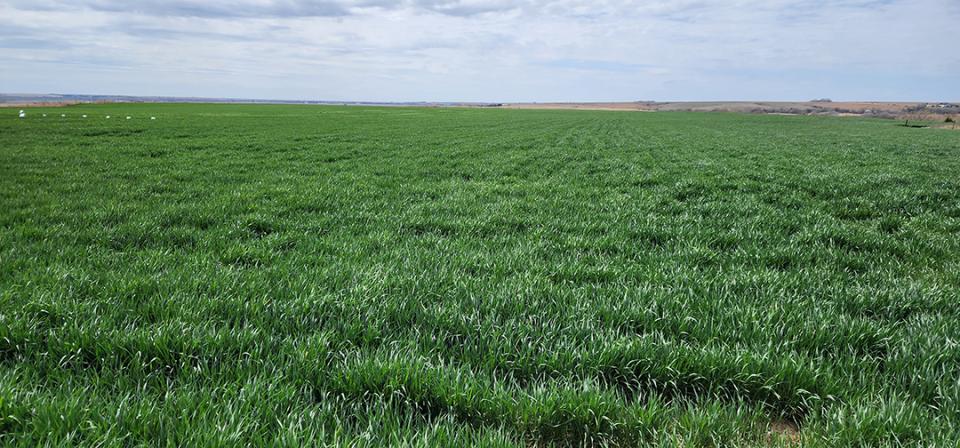
Wheat Disease Update for May 3, 2024
Disease surveys conducted April 24-26 found only trace levels of disease in wheat fields in the south-central, west-central and southern Panhandle regions of Nebraska. Wheat in the majority of fields surveyed looked healthy with a luxuriant green canopy (Figure 1). Growth stage ranged from Feekes 6 (first node detectable) in the Panhandle to Feekes 8 (last leaf, or flag leaf, visible) in south-central Nebraska. On April 29, growth stage at Havelock Research Farm in Lancaster County in southeast Nebraska was Feekes 9 (ligule of last leaf visible).
The diseases observed at trace levels were wheat streak mosaic (Figure 2) and leaf spots (Figure 3). A couple of fields in the southwest showed a brown canopy (Figure 4) due to chemical burn on the leaf tips. This happens following foliar fertilizer application and the wheat usually grows out of it.
In the southern Panhandle, a few isolated spots within wheat fields showed yellowing and stunting that appeared to be due to nutrient deficiency (Figure 5).
Reports from Southern States
There have been reports of stripe rust (Figure 6) in Texas, Oklahoma and Kansas. Stripe rust infections have been heavy and widespread in southwest Oklahoma, and as of April 21 they had spread north to Stillwater. In Kansas, stripe rust had been confirmed at low levels in 14 counties as of April 25, including two counties close to the Nebraska border. On April 24, stripe rust was observed at trace levels in Kearney County in south-central Nebraska. And on May 1, stripe rust was observed in Saline County in southeast Nebraska, also at trace levels (Figure 7).
In 2020, we launched a new effort to track the movement of wheat stripe and leaf rust by county across Nebraska. We want to continue this effort again in 2024. Please contribute to the rust tracking map by completing the quick survey as the growing season progresses. We do ask you to complete the survey even if you have not observed stripe or leaf rust yet. You will be answering several questions and with an option to upload a photo(s) as a part of this survey to track the distribution of stripe and leaf rust in Nebraska by county. Once you have completed the survey, you can view and download a PDF copy of what you submitted in your web browser, and you will receive a confirmation email too.
Thank you for your help in tracking the movement of stripe and leaf rust in Nebraska!
The weekly distribution map resulting from this survey will be posted on the CropWatch Wheat Disease Management page.
Preparing for Stripe Rust and Other Wheat Diseases
Given the presence of stripe rust in states to our south, it is likely that the disease will develop in Nebraska wheat fields. The current wet weather elevates the risk for development of stripe rust to damaging levels. If the wet weather trend continues, the risk for Fusarium head blight (Figure 8) will also be elevated. Now is the time to scout wheat fields for stripe rust and the leaf spot diseases tan spot (Figure 9) and Septoria tritici blotch (Figure 10).
If stripe rust is detected and the variety planted is susceptible, apply a fungicide timed to protect the flag leaf. If rainfall persists before and during flowering, apply a fungicide at early flowering control Fusarium head blight.
The North Central Regional Committee on Management of Small Grain Diseases (NCERA 184) has compiled a table of fungicides used to control wheat diseases, including the efficacy of each fungicide in controlling specific diseases (Table 1).
Online Master of Science in Agronomy
With a focus on industry applications and research, the online program is designed with maximum flexibility for today's working professionals.









